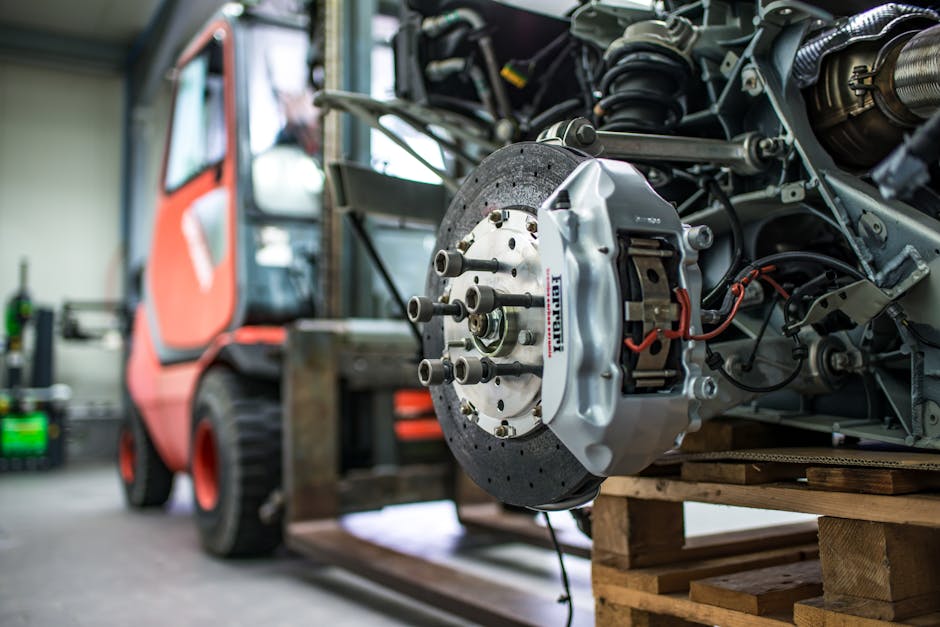Think not just about the cars, the burnout videos, or the wild product names. If you ever wondered who pulls the strings and makes the money at Motion Raceworks, you’re in the right garage. Ownership matters, whether you’re building an empire or just keen on how the parts business works. Here, you’ll find a no-jargon, no-fluff look at exactly who owns Motion Raceworks, why it matters, and what you can learn if you’re thinking, “How do I build or invest in something like this?”
Introduction to Motion Raceworks
What comes to mind when you picture a thriving performance auto parts company? Probably not three guys in a home garage, juggling power tools and spreadsheets between work and dinner. Yet that’s exactly how Motion Raceworks started scrappy, resourceful, bootstrapping from the ground up.
Founded in 2015, Motion Raceworks supplies high-performance parts to car enthusiasts, race teams, and anyone who thinks stock is boring. If you’re picturing racks of turbo kits, innovative shifters, and YouTube shoutouts, you’re spot on. The company quickly went from late nights in Doug Cook’s garage to an established brand with a loyal following.
Evolution is the recurring theme here. Growth came from listening to customers, solving real-world problems, and designing parts that bridged gaps. It didn’t hurt that social media and influencer partnerships helped drive demand and credibility without the need for a giant ad budget.
Founders and Ownership
Let’s get straight to the point who founded Motion Raceworks, and who owns it? Meet Doug Cook, Andy Cook, and Brian Jack. These aren’t just names on an LLC filing; they’re the hands-on types who built the original prototypes, answered customer emails themselves, and probably packed a few of the early product boxes too.
Doug Cook’s garage wasn’t just ground zero; it was the test lab, design studio, and inventory storage all in one. Andy Cook and Brian Jack joined forces early, building Motion Raceworks into a formidable brand by wearing every hat from product design to operations management.
If you’re growing your own business, you’ll know this story well: founders start by doing everything themselves. That sweat equity is what gives many brands an edge because who knows the customer better than the person who answers the phone when things go sideways?
Today, Doug, Andy, and Brian are still the majority owners. Decision-making isn’t run by endless committees or corporate jargon. The same people who shipped your first order are still steering the ship, deciding what comes next, and keeping the brand focused on what car enthusiasts actually want.
Stake and Influence of the Cleetus McFarland Team
Here’s where things get interesting and where real lessons about modern partnerships come into play. In June 2021, Motion Raceworks made waves by letting new blood in at the ownership table. The Cleetus McFarland team, led by YouTube star Garrett Mitchell, bought a 20% stake in the company.
Who is Garrett Mitchell, and why does this matter? If you’re new to car YouTube, think high-horsepower cars, viral drag racing content, and a tribe of followers who tune in for every torque-filled minute. Garrett and his Cleetus McFarland team brought not only fresh capital but a massive marketing audience.
This wasn’t just about selling shares; it was about adding a voice, a platform, and a new perspective to the decision-making team. Garrett and associates came aboard with a seat on the board, helping steer the business toward its next stage.
So, what actually happens when you add new, highly visible partners? Influence goes both ways. The founders still call the majority of the shots (we’ll get to the structure in a minute), but Garrett’s team helps steer product launches, marketing collabs, and the kind of partnerships that get fans talking.
If you’re running a small or midsize business right now, consider: Would a strategic investor with a big audience propel your brand or distract it? Motion Raceworks shows it can work, as long as you’re clear about who holds which decisions and how value is created on both sides.
Ownership Structure: Who Owns What, and How Do They Decide?
Let’s break down the ownership structure so you don’t need a whiteboard (or a lawyer) to follow along:
- Majority Owners (Founders): Doug Cook, Andy Cook, and Brian Jack retain most of the equity and control. They’re the final vote on big decisions and strategic direction. If you’ve built the business, you likely want to keep this kind of say.
- Minority Owner: The Cleetus McFarland team led by Garrett Mitchell holds a 20% stake. They’re officially on the cap table, bringing marketing firepower, audience engagement, and a voice in board meetings.
Decision-making is practical, not bureaucratic. The founders have the last word, but the Cleetus McFarland team brings informed feedback, fresh eyes, and plenty of reach. It’s not a one-person show, and it’s not pure democracy, either it’s partnership in action.
This blend can be a real win for growing businesses. You get the stability and gut-check instincts of the founders, plus the dynamism and networking of an influential minority partner. But be honest with yourself: Could you cede 20% ownership if it meant 80% more opportunity? Sometimes that’s the real test.
Impact of Ownership on Company Strategy
So, what’s changed at Motion Raceworks since the new ownership mix? Think of it like adding a turbocharger to a well-tuned engine. The Cleetus McFarland team helped push product launches harder, reach fresh audiences, and make strategic alliances faster.
Garrett Mitchell’s influence brings social proof. His stamp of approval can launch a new part into the viral stratosphere without burning cash on traditional advertising. The founders get a boost in customer trust and reach a classic example of “one plus one equals three.”
But there are challenges (and, let’s be honest, a few late-night debates). Having two sets of priorities founders who sweat the details and partners who move at influencer speed means you need clear communication. Set boundaries. Spell out who decides what. If you’re writing your own bylaws, take notes: clarity up front saves headaches later.
What about risk? Sure, new partners mean new ideas…and sometimes tough conversations about investment, growth pace, or brand image. If you’re considering a similar partnership, plan for quarterly reviews, open-book finances, and regular strategy sessions. The key is to keep your business nimble without losing what made it special to start with.
Want to see how strategic minority investment can amplify your growth without giving up the wheel? Take a look at growth stories across different industries many highlight the value of strategic partners over venture capital. If you’re building on a shoestring, this model can be a cost-effective way to grow your brand authority and sales without breaking the bank.
Lessons and Takeaways for Small Business Owners
What should you take away if you’re not in automotive, but just running a growing operation? Several things:
- Start with founders who do the work. If you know your customers and product inside-out, your brand wins loyalty and feedback, fast.
- Add partners only when they multiply value. Don’t just sell equity for cash. Find collaborators with platforms, credibility, or audiences you don’t already have. Make it a win-win, not a money grab.
- Keep decision-making clear and practical. Who decides what? Spell it out in writing and revisit those agreements as your company grows or the market shifts.
- Balance stability with agility. Let founders anchor the must-haves, but encourage new partners to push innovation, audience, and momentum.
- Communicate relentlessly. Founders and minority owners need scheduled check-ins and real numbers. Eliminate confusion with regular reporting and clear roles. Transparency beats drama every time.
- Stay customer-obsessed, not investor-obsessed. Every growth move every product change should reinforce your reputation among your core customers. Don’t lose the garage logic that got you this far.
If you want more playbooks for team structure, scaling tips, or cost-saving strategies, check out Small Business House for ideas and real-world guides you can swipe and deploy now.
Conclusion
So, who owns Motion Raceworks? In simple terms, Doug Cook, Andy Cook, and Brian Jack are the majority holders, with the Cleetus McFarland team as prominent, active minority partners. It’s a winning mix of hands-on experience and social influence, all aimed at keeping the brand fast, responsive, and relevant.
For your own business, the Motion Raceworks model is a lesson in smart ownership: Start with an obsession for solving real problems, add partners only when it adds serious fuel, and keep strategy grounded in what your customers actually want. That’s how you build something worth owning…and keep it growing without needing a corporate headquarters or even a fancy office.
Alright you’ve got the blueprint. Now, test one smart partnership or ownership shift in your own company. Measure results, get customer feedback, and scale what works without breaking the bank. Ownership, after all, isn’t just about who signs the checks. It’s about shaping the vision, direction, and ongoing value for both your team and your fans. And if you do it right, maybe your garage-turned-business will be the next big story we all want to follow.







